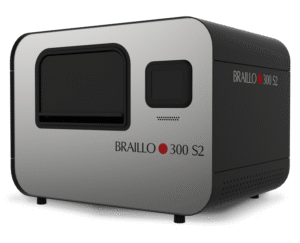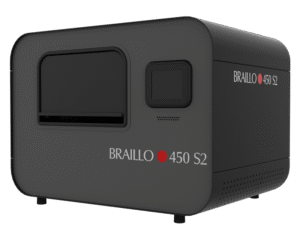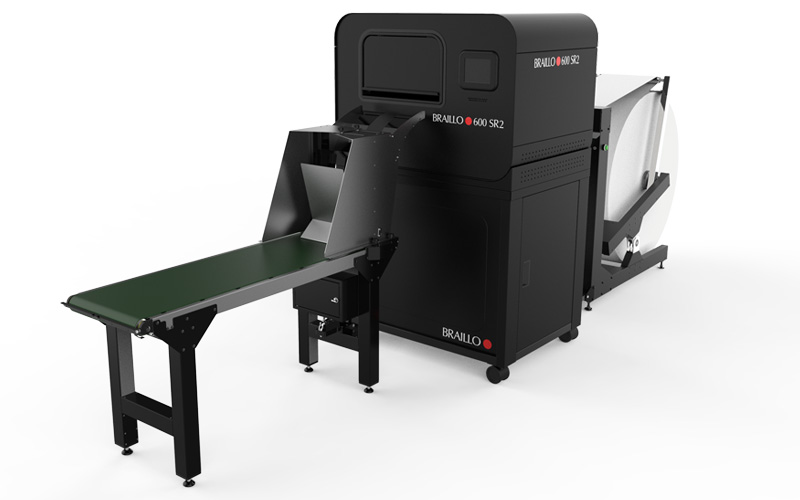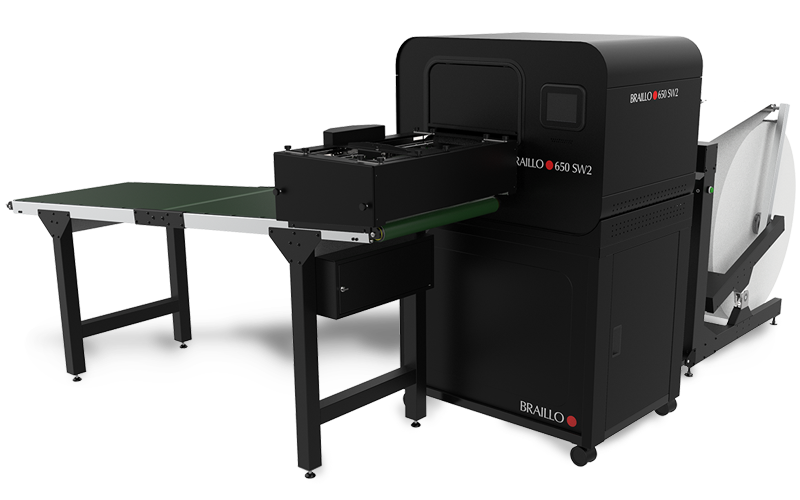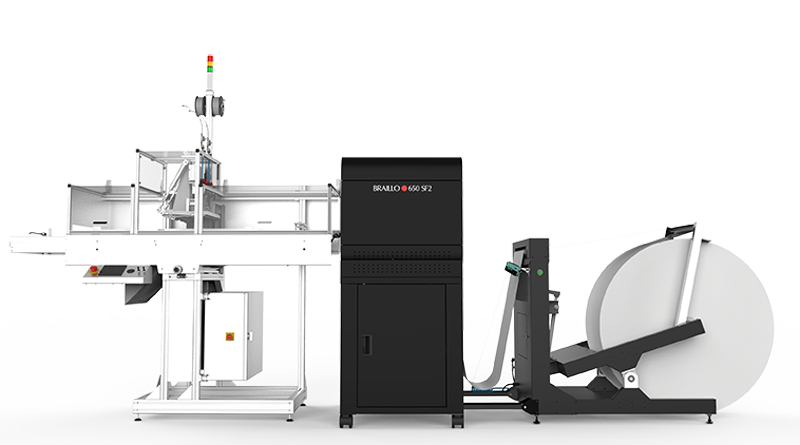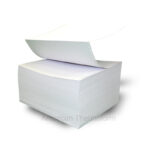Braillo Braille Printers - The Indusry's Best, and Only, True Production Braille Printer
![]()
Braillo braille printers are trusted by production facilities around the world as the gold standard in true, high-quality production braille embossing. Engineered for speed, durability and precision, Braillo is the only manufacturer offering a 4-year warranty, industry-leading accurate embossing speeds, and consistent compliant braille dot heights required by government authorities worldwide.
But beyond performance, Braillo delivers on a deeper promise: when Braillo braille printer customers are empowered to produce braille affordably, reliably and at scale, the entire blind and visually impaired community benefits. Braillo’s unwavering commitment to braille quality helps ensure greater access to textbooks, literature, exams, workplace materials and recreational reading for all. The result is a braille book that supports education, independence, employment and inclusion.
Benefits of Investing In Braillo Printers:
True Production Braille Printers
In order to meet the heavy demands of true braille production, the embosser needs to be made of durable, high quality parts and components. Braillo is the only manufacturer of braille printers that can deliver on this promise. See The Braillo Difference.
Free Duxbury Software
The world’s most trusted and reliable braille translation software, Duxbury, is included free with the purchase of a Braillo braille printer. See Details
Highest Quality Braille Paper
For over 30 years, Braillo has produced their own custom braille paper that adheres to the highest standards available. The end result is a strong, durable, low-dust, chemical-free paper that will not only produce a superior braille dot, but will ensure the braille dot holds its shape over many uses. Additionally, because of its quality, it will also help extend the life of your Braillo embosser. See our Braille Paper
Leading Warranty In the Industry
For all Braillo models, our standard warranty covers every defective mechanical and electrical component from the date of purchase throughout the first three years, or up to 8,000 hours – whichever comes first. This amounts to up to 15.6 million braille pages. By the time most embossers have become obsolete or stopped working, Braillo embossers are still under warranty!
We add an additional 1 year for using Braillo/ATC braille paper
Braillo will offer an additional 1 year to the standard warranty by using Braillo/ATC braille paper with your embosser. The use of poor quality braille paper often causes excessive wear and tear on an embosser, which causes parts to fail prematurely. Using Braillo/ATC’s specially formulated braille paper will help ensure these risks are minimized.
This brings the total warranty to 4 years, or up to 10,700 hours. This amounts to up to 20.8 million braille pages. This is the industry’s most comprehensive and rich warranty, and shows that we stand behind our braille embossers – no matter what. Learn more about our industry leading warranty.
World Class Support
Braillo offers global support via telephone, email, YouTube videos and on-site repair by either Braillo staff, or our network of factory-trained technicians world-wide. Braillo offers training sessions across the world throughout the year, in addition to braille workshops.
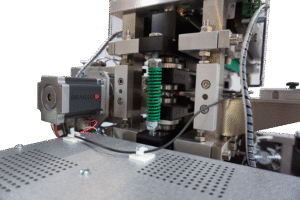
The Braillo Difference
Compare the quality of Braillo parts and components vs. other manufacturers
What Are Production Braille Printers?
A braille printer, or embosser, is an impact device that creates tactile dots on heavy braille paper, transforming written documents into accessible formats for blind individuals. While many manufacturers produce small desktop models, Braillo is uniquely dedicated to building true production-grade braille printers—designed specifically for high-volume output, superior dot quality, and long-term reliability.
Braillo embossers are the foundation of successful braille print houses, helping them operate more efficiently, reduce downtime, and deliver consistent quality at scale. This operational strength allows them to serve more institutions, universities, and government agencies—expanding access to textbooks, official documents, exams, and literature for the blind and visually impaired community worldwide.
When considering the purchase of a braille printer, it is essential to evaluate not just the specifications, but also how the machine will support your long-term production goals, efficiency, and the broader mission of inclusion through accessible content.
What are production braille printers being used for?
If the braille printer’s primary use is for limited personal use or short-run light production, then a lightweight desktop braille printer is probably more than sufficient for your needs. This type of braille printer can easily accommodate a duty cycle of an hour or two per day. However, if you require a printer to run multiple hours per day, five days per week, or even two shifts five days per week, then a Braillo production rated braille embosser is required to provide adequate service.
Quality of the braille printer:
Braillo braille printers are precision made, using state of the art manufacturing techniques. The finest grade metal is hand-machined to exact tolerances and then assembled at our facility in Stjordal, Norway. Component parts that are either manufactured in-house, or custom made by CE approved suppliers, further guarantee the quality of the finished product.
Braillo also manufactures its braille printers with such reliable mechanical parts that even older models can be upgraded with current electronics, features and speed levels—no other braille printer manufacturer can offer such reliability and longevity in its products. Braillo printers are built to last.
Braillo braille printers are capable of around-the-clock braille production, and it is not uncommon to have a Braillo printer still in service after 20 years and millions of braille pages produced.
We would be pleased to provide you with a list of references.
Quality of the braille:
Braillo braille is known as the “benchmark” for which all braille printers are measured against. It consistently produces the highest quality braille available. Consistent height and precise alignment allows for a perfectly formed braille dot and braille cell, facilitating easier reading.
The European Commission, National Library Service (U.S. Library of Congress), BANA and other governing agencies across the world have strict guidelines regarding braille quality and printed braille dot height of .48mm or above. Many braille printers do not meet these specifications – be sure to request samples of the printed braille output of any printer which you are considering to purchase, to ensure it meets your requirements. The dots should all be the same height, with equal spacing, and in the correct position. See how important braille formatting and dot height standards are here
We are happy to provide printed braille samples that are produced on the specific Braillo embosser you are interested in purchasing.
True production braille – what is it?
When braille is required to be produced in large quantities, day-after-day and week-after-week – that is production braille. Braillo was established in 1980 with the development of the world’s first high-speed interpoint braille printer. Since then, it has focused its efforts entirely on true production braille printers. Braillo is the true innovator and leader in the braille printer category.
Braillo printers are found in the largest braille print houses, as well as in educational and government facilities throughout the world. Its newest printer, the revolutionary 650SF, is a printer that uses paper rolls to produce complete braille magazine and book formats that are covered and bound in one hands-free procedure.
All Braillo production braille printer models feature tractor feed or roll format braille paper options – the most reliable forms of paper handling. Tractor feed boxes generally contain 1000 sheets, and paper rolls equate to approximately 15,000 sheets. Compare this with cut sheet (sheet fed) braille printers, of which the largest has a capacity of 100 sheets (count sheets and not pages – in magazine/book format, 1 sheet = 4 pages, so this is a misleading specification). While they may be fast CPS-wise, it is difficult to call a cut sheet printer “production” when you have to stop every 10-15 minutes to load paper and/or remove paper jams. The actual page per hour or CPS rating falls dramatically when this reality is taken into account. There is simply no number of cut sheet printers or small desktop printers that can cumulatively compare to the efficiency, quality and output of a single Braillo braille printer of any model.
In addition to reliability and quality, you need your true production braille printer to be fast. Check with the National Federation of the Blind and other agencies across the world, who offer true, real-world speed test results of all braille printers on the market.
What kind of braille paper (format and weight):
Initially, braille printers used only tractor feed/continuous braille paper. In an effort to lower production costs for Braillo’s customers, it was the first company to introduce roll feed printers. There is no question that using tractor feed paper is still the most reliable method for production printing, and it is still the most widely used format today. Tractor fed braille printing ensures that the paper is correctly fed into the printer and that the user doesn’t have jamming-related errors.
Using braille paper rolls is also an extremely reliable way of producing. It is less expensive than using tractor-feed and you don’t have to change paper frequently.
In a braille production environment, cut sheet paper is not recommended, nor efficient. These embossers only allow for a maximum of 50-100 single sheets to be loaded at a time, and the paper can more easily get jammed in the braille embosser.
The recommended paper weight is 140/150 GSM or 100 LB – anything less than that won’t withstand the heavy demands of braille production or repeated reading by a blind user. Be cautious of using traditional copy paper or paper from a local office supply store. This paper is too thin and as soon as it goes through the embosser, the braille pin will poke right through the paper or after the first time a finger slides over the dot, it flattens out. Basic office supply paper is too weak for embossed braille and thus, a disservice to the blind reader.
Ask to see a sample of standard Braille paper vs traditional copy paper – Braillo will be happy to provide you with both so you can feel the comparison.
Translation software for braille printers:
Transcribers and proofreaders work extremely hard to ensure that the file they’re sending to the braille printer comes out correctly. The only way to properly ensure braille translation, comes from using a professional translation software. Braillo includes a copy of Duxbury for free with every Braillo braille printer purchase, Duxbury is the most trusted braille translation software. Braillo will also gladly provide a list of additional recommended software programs.
Printing directly from your computer, phone or tablet without such software simply is not productive if the braille output is incorrect, as there are too many variables (Grade 1 vs. Grade 2 vs. Grade 3, 6 dot vs. 8 dot, languages, punctuation, etc). Additionally, most braille embossing production centers will be sending files from their computer, not a tablet or phone.
Braille printer support:
Braillo offers printer support via telephone, email, YouTube videos and on-site repair by either Braillo staff, or our network of factory-trained braille printer technicians world-wide. Braillo offers training sessions across the world throughout the year, in addition to other Braille workshops. While some manufacturer’s offer remote support, this is typically an online chat session that doesn’t resolve actual hardware issues. Instead, Braillo offers a real technician over the phone or internet that will spend the time with the customer in order to properly diagnose and resolve the issue, whether it’s hardware or software related.
The investment in a Braillo braille printer (or any braille printer) is a big one, so please rest assured that it is Braillo’s highest priority to ensure that your embosser is running properly and that you are satisfied with your investment.

